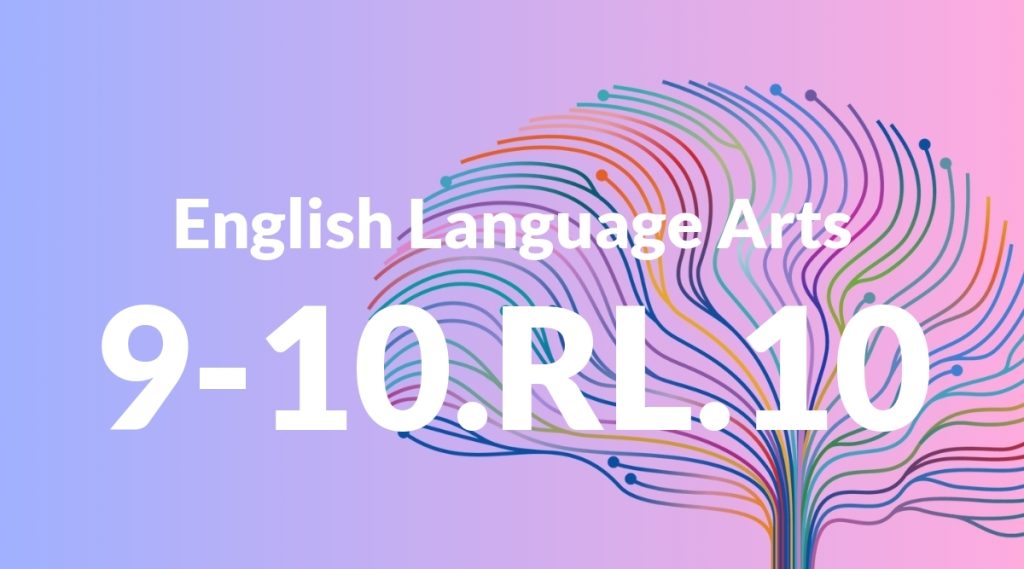Standard: 9-10.RL.1 – Cite strong and thorough textual evidence to support analysis of what the text says explicitly as well as inferences drawn from the text.
Grade level: Grade 9-10
Subject: English Language Arts
Domain: Reading: Literature
Teacher Overview
This standard emphasizes the importance of using strong and thorough textual evidence to support both explicit statements and inferences in literary analysis. Mastering this skill is crucial for developing critical thinking and analytical writing abilities, which are foundational for higher-level English courses and standardized assessments. Students should already be comfortable with identifying key details in a text and making basic inferences. They should also have experience with discussing and writing about literature in a structured format.
By mastering this standard, students will be able to conduct more nuanced literary analyses and support their interpretations with strong, relevant evidence. This skill will be essential for success in advanced English courses and standardized tests.
Common Misconception 1
One common misconception is that any piece of text can be used as evidence, regardless of its relevance. This is incorrect because strong textual evidence must directly support the analysis and be clearly connected to the point being made.
Intervention 1
To address this, provide examples of both strong and weak evidence and have students practice distinguishing between the two. Use peer reviews and group discussions to reinforce the importance of relevance and strength in textual evidence.
Common Misconception 2
Another misconception is that inferences are mere guesses. In reality, inferences are reasoned conclusions based on evidence from the text. This misunderstanding can lead to weak or unsupported analyses.
Intervention 2
Use graphic organizers to help students map out their inferences and the textual evidence that supports them. Practice this skill with a variety of texts to build confidence and competence.
Prerequisite Knowledge
Students should have a foundational understanding of basic literary elements such as plot, character, and theme. They should also be familiar with identifying explicit information in a text and making simple inferences.
Subsequent Knowledge
After mastering this standard, students will be able to engage in more complex literary analysis, including evaluating an author’s choices and how they contribute to the overall meaning of the text. They will also be prepared to conduct comparative analyses of multiple texts.
Instructional Activities
- Group discussions analyzing key passages from a novel
- Writing essays that require citing textual evidence
- Creating graphic organizers to map out inferences and evidence
- Peer review sessions focusing on the strength of textual evidence




